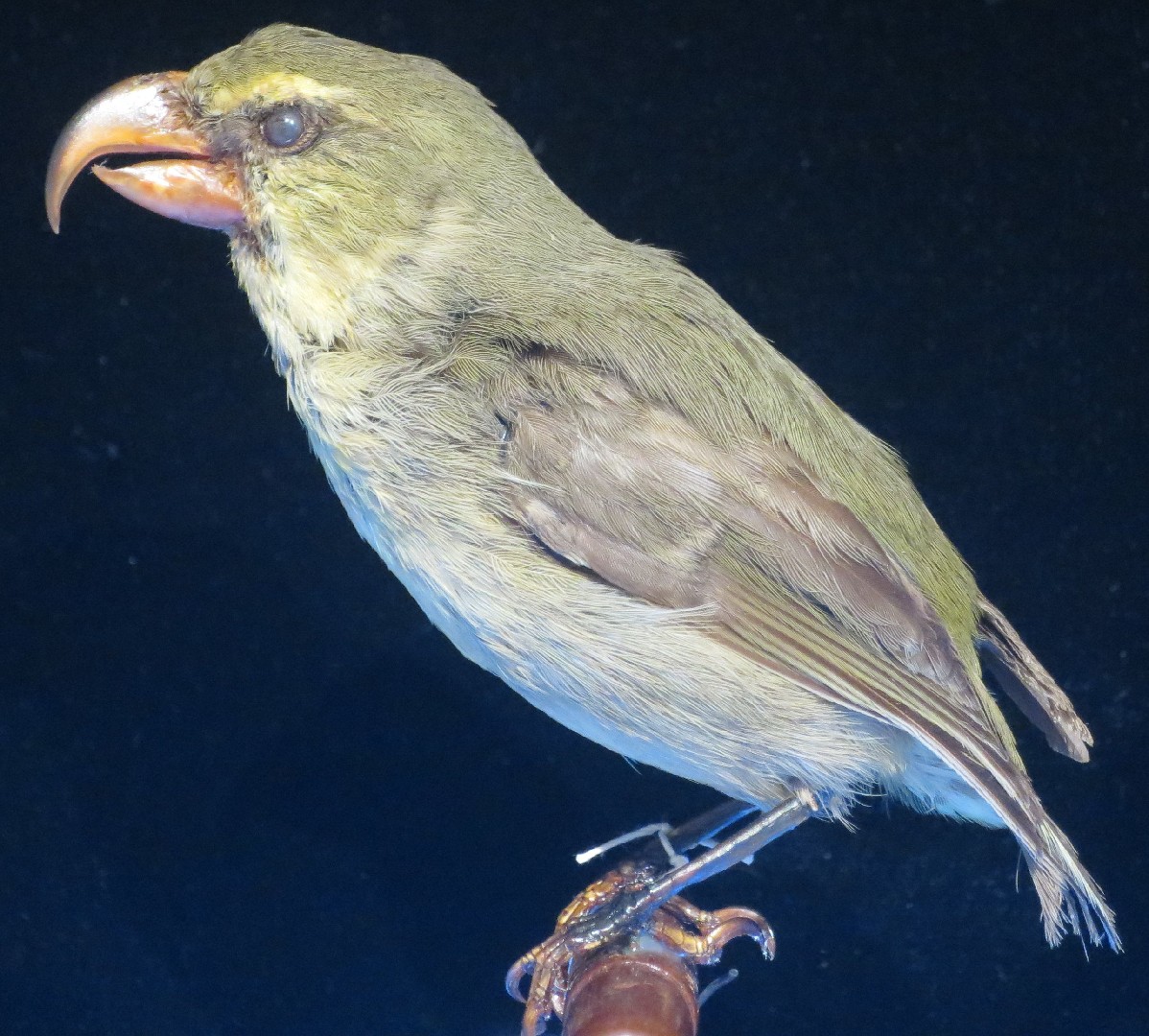Maui Parrotbill
A species of Maui Parrotbill Scientific name : Pseudonestor xanthophrys Genus : Maui Parrotbill
Maui Parrotbill, A species of Maui Parrotbill
Botanical name: Pseudonestor xanthophrys
Genus: Maui Parrotbill
Content
Description General Info
Description
The Maui parrotbill is one of the larger Hawaiian honeycreepers, measuring 14 centimetres (5.5 in) and with a mass of 20–25 grams (0.71–0.88 oz). The bird is yellow on the breast, cheeks, and belly, olive-green on the wings, crown, tail, and back, and has a bright yellow supercilium. The upper mandible of the bird's beak is hooked and dark gray, while the lower mandible is chisel-like and pale ivory. Males are longer-winged, larger-billed, and heavier than females. Juveniles are gray-green above and light gray ventrally. 
Size
14 cm
Life Expectancy
5 years
Nest Placement
Cliff
Feeding Habits
Maui Parrotbill primarily consumes insects, including moth pupae and beetle larvae. It employs a foraging method that includes prying apart bark and leaves to locate its prey. This species has a beak adapted for accessing difficult-to-reach larvae, showcasing a unique dietary specialization.
Habitat
The maui Parrotbill resides in high-elevation montane mesic and wet forests dominated by 'ōhi'a and mixed 'ōhi'a-koa trees. These habitats feature a dense canopy and rich understory vegetation, including an array of ferns and native plants. Conditions here are marked by heavy rainfall (250-850 cm/yr), frequent cloud cover, and fog, contributing to the environmental richness ideal for maui Parrotbill's survival, albeit threatened by invasive species and habitat degradation.
Dite type
Frugivorous
General Info
Feeding Habits
Bird food type

Fruit
Distribution Area
The Maui parrotbill currently lives only in undisturbed wet forests dominated by ʻōhiʻa lehua (Metrosideros polymorpha) and small patches of ʻōhiʻa-koa (Acacia koa) mesic forest. Its habitat exhibits a dense understory of small trees, shrubs, epiphytes, ferns, and sedges, centered between Puʻu ʻAlaea, Kuhiwa Valley, Lake Waianapanapa, and upper Kīpahulu Valley, an area less than 2,020 hectares (5,000 acres), at elevations of 1,310–2,070 metres (4,300–6,790 ft). 
Species Status
The Maui parrotbill's natural habitat is mesic and wet forests. It is threatened by habitat loss. Much of the land in the parrotbill's historic range was changed for agricultural purposes, timber production and animal grazing. Introduced pests, such as mosquitoes, rats, and feral ungulates directly and indirectly affect the parrotbill's survival. Mosquitoes spread avian malaria, which the parrotbill is susceptible to, rats prey upon the birds' eggs and young, and feral pigs uproot the low-lying vegetation that the parrotbill forages in. Pigs additionally create wallows, which serve as breeding grounds for avian malaria-infected mosquitoes. The Maui parrotbill was listed as an endangered species in 1967 under the Endangered Species Act. It is also part of the Maui-Molokai Bird Recovery Plan in 1984, which led to fencing areas of East Maui and removing feral ungulates. The recovery plan also included a captive breeding program, which produced its first chick in 2003. Field research is primarily done by the Maui Forest Bird Recovery Project. A 2009 survey of the Waikamoi Preserve estimates that there are about 20 birds per square kilometer in the windward preserve near the summit of Haleakala, indicating that the population is holding steady or possibly increasing. A contributing factor is that native shrub cover in Waikamoi has tripled in the past 15 years. A previous study found about half the density. The preserve contains about 25 percent of the population, while most of the rest is in the Hanawi Natural Area Reserve. The birds were once found throughout Maui and Molokai. 
Scientific Classification
Phylum
Chordates Class
Birds Order
Perching birds Family
Finches Genus
Maui Parrotbill Species
Maui Parrotbill 